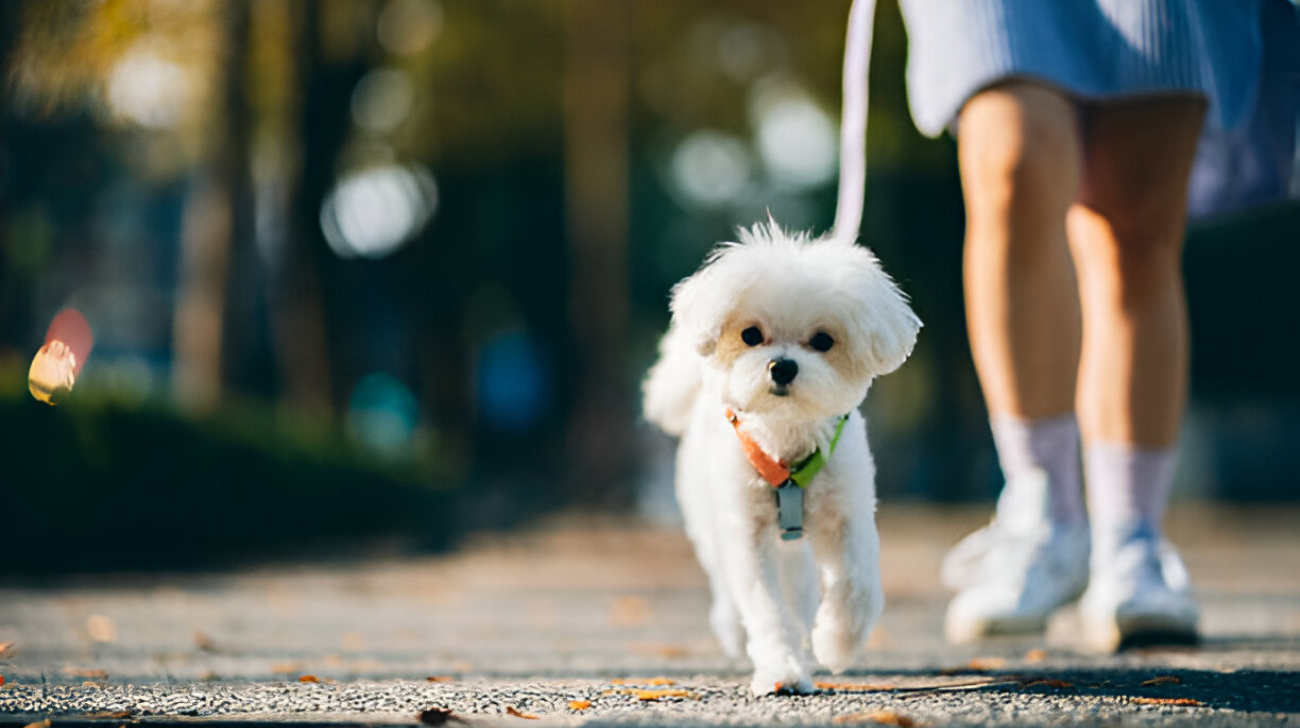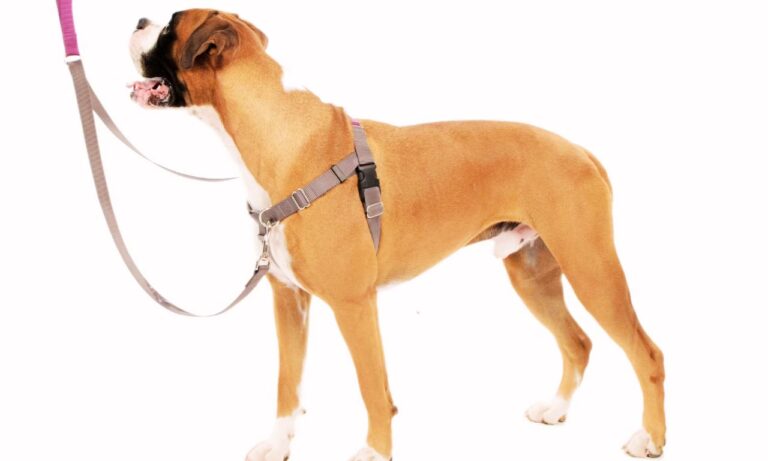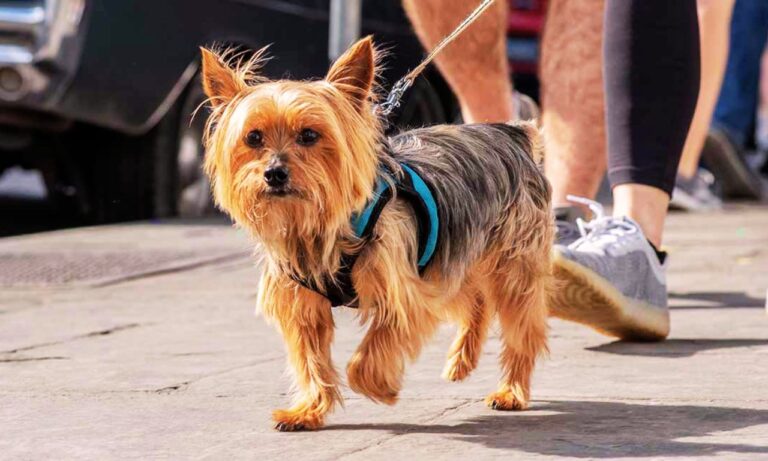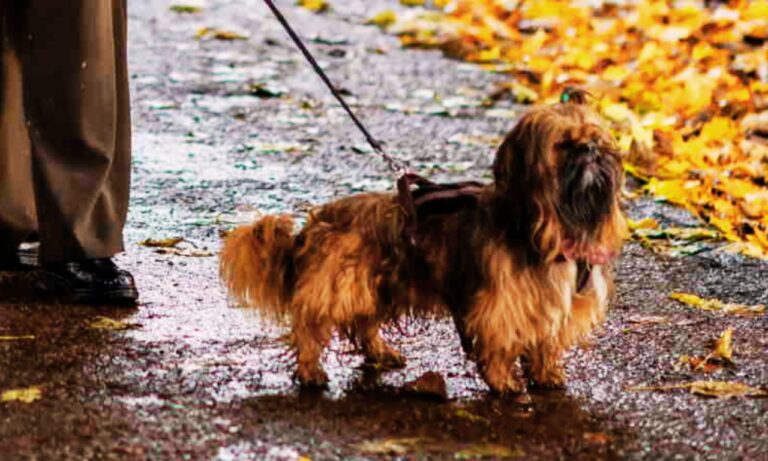Maltese dogs are small, delicate companions that are known for their charm and elegance. However, their size and fragile structure make choosing the right accessories, especially collars, critical for their health and safety. So, Can a Maltese wear a collar? I’ll explore whether a Maltese should wear a collar, the associated risks, and the benefits of opting for alternative accessories like harnesses. Learn if it’s bad to leave a dog’s collar on all the time and how to ensure your pet’s comfort.
Blog Highlights
ToggleCan a Maltese Wear a Collar?
Can a Maltese wear a collar? Yes, a Maltese can wear a collar. However, it’s important to choose a lightweight, well-fitting collar to ensure comfort and safety. Opt for materials like nylon or cotton, and regularly check for proper fit to avoid irritation. Consider a harness for added security during walks.

Quick Fix Table: Can a Maltese Wear a Collar?
Why Maltese Owners Opt for Collars?
Dog collars serve several important purposes for any dog owner. They hold identification tags, provide a way to attach a leash for walks, and offer a certain level of control over the dog when out in public. Here are a few reasons why a Maltese might benefit from wearing a collar:

- Identification: A collar with an ID tag is crucial if your Maltese gets lost. It signals ownership and provides contact details for a safe return.
- Training and Walking: Collars can be used for light control during walks, especially with a lightweight Maltese, though this should be done cautiously.
- Fashion: Many pet owners enjoy dressing up their Maltese, and a stylish collar can serve as an adorable accessory.
However, the decision to use a collar for your Maltese must be made carefully. There are important considerations to keep in mind, especially given the breed’s physical vulnerabilities. Find out whether collars are bad for a dog’s neck and fur and how to avoid common issues.
The Risks of Using a Collar on a Maltese
Maltese dogs, being part of the toy breed category, are prone to certain health issues related to the neck and throat. These issues are primarily due to the delicate structure of their trachea and the lack of thick neck muscles, which larger dogs use to protect their throat area. Using a collar on a Maltese, especially during leash training, can cause significant risks.
1. Collapsed Trachea:
One of the most common issues for small breeds like the Maltese is a collapsed trachea. This condition occurs when the tracheal rings weaken and collapse, making it difficult for the dog to breathe. Using a collar that exerts pressure on the neck can accelerate this degeneration. Once a collapsed trachea occurs, it is irreversible and may require surgery in severe cases.

2. Throat and Neck Injuries:
Tight or poorly fitted collars can cause physical damage to a Maltese’s throat and neck, especially if the dog pulls on the leash. Even light pressure on a Maltese’s neck can cause long-term damage, making it essential to ensure the collar is not too tight or heavy.
3. Neurological Issues:
Collars can also restrict blood flow and place pressure on the vertebrae, leading to neurological problems. Some Maltese may develop nerve damage or suffer from lameness, especially if they pull against the collar frequently.
4. Hypothyroidism:
Collars that sit on the throat can cause inflammation around the thyroid gland, which can trigger an autoimmune response, leading to hypothyroidism. This is a common condition in small dogs and can be worsened by constant collar pressure.
Some research suggests a connection between collars and eye issues like glaucoma. The pressure exerted by a collar can increase eye pressure, leading to corneal damage in some cases. Explore if mountain dogs are good pets and suitable for your home.
Alternatives: Why a Harness is a Better Choice
Given the risks associated with collars, many experts recommend switching to a harness for Maltese dogs. Harnesses distribute pressure more evenly across the dog’s chest and back, avoiding the sensitive neck area altogether. Here’s why a harness is a better option:
- Even Pressure Distribution: Harnesses spread the force over the dog’s chest and shoulders, preventing any strain on the neck and reducing the risk of tracheal injury.
- Safety and Control: Harnesses provide more control during walks. Since the leash attaches at the back, it allows you to guide the dog’s entire body, rather than just pulling on its neck. This is especially useful if your Maltese tends to pull while walking.
- Comfort: Many modern harnesses are designed for comfort. Lightweight, breathable materials, such as mesh, ensure that your dog stays cool and comfortable, even during warm weather.
- Accident Prevention: Because a harness eliminates pressure on the neck, it also reduces the risk of severe accidents, such as choking or neck injury if the dog suddenly pulls or if there’s a need to quickly lift the dog in an emergency.
Choosing the Right Collar or Harness for a Maltese
If you choose to use a collar, it is essential to pick one that is lightweight and fits properly. Here are a few guidelines for choosing the right size collar for your Maltese:

- Neck Size: For Maltese dogs, the typical neck size ranges between 6-12 inches. A collar that is too tight can cause discomfort, while one that is too loose may slip off.
- Material: Opt for a soft material that won’t rub against your dog’s neck. Leather or padded fabric collars are ideal for ensuring comfort.
For harnesses, you’ll want to focus on models that are:
- Step-in: These are easy to put on, especially for small dogs.
- Breathable: Look for materials like mesh, which allow air to circulate and keep your Maltese cool during walks.
When to Avoid Collars
Even with a well-fitted collar, there are certain situations where you should avoid using one for your Maltese:

- During Sleep: Remove the collar before bedtime. Collars can pose a choking hazard if they get caught or twisted while the dog is resting.
- At Playtime: If your Maltese is playing, especially with other dogs, collars can become dangerous if they get caught on something. During active play, it’s best to let your dog be collar-free.
- Extended Indoor Use: There’s no need for your Maltese to wear a collar indoors unless required for training purposes or identification.
Transitioning Your Maltese to a Harness: Tips for Success
Now that we’ve established that a harness is generally a safer option for a Maltese, you may wonder how to make the transition if your dog is accustomed to wearing a collar. Like with any change in routine, switching to a harness requires patience, but with the right approach, it can be a smooth process. Determine the ideal collar size for a Bernese Mountain Dog with this guide.
Gradual Introduction to the Harness
If your Maltese has never worn a harness before, it’s important to introduce the new gear gradually. Learn the best practices for putting a collar on thick-skinned dogs to ensure a comfortable and irritation-free fit. Here’s a step-by-step guide to help your dog adjust:
- Familiarization: Begin by allowing your Maltese to sniff and explore the harness. Leave it around their play area so they become familiar with its scent and shape. This is important to prevent your dog from seeing the harness as a foreign or threatening object.
- Positive Reinforcement: Dogs respond well to positive reinforcement, so use treats or praise each time your Maltese interacts with the harness. Once your dog seems comfortable around it, try gently placing the harness on without fastening it. Reward your dog with treats and positive reinforcement during this phase.
- Short Trials: Once your Maltese is comfortable wearing the harness, fasten it for a short period—perhaps just a few minutes—and allow them to walk around the house. Continue to offer treats and praise to reinforce the positive experience. Gradually increase the duration over the course of several days.
- Go for a Test Walk: Once your Maltese is accustomed to the harness indoors, take them for a short walk outside. This step will help your dog associate the harness with enjoyable activities like walks and outdoor adventures.
- Consistency is Key: Make wearing the harness a consistent part of your Maltese’s routine. Use it every time you go for a walk, so your dog grows accustomed to the new equipment.
Choosing the Best Harness for Your Maltese
Not all harnesses are created equal, and selecting the right one for your Maltese is essential for ensuring both safety and comfort. Here are some factors to consider when choosing a harness for your Maltese:
- Size and Fit: A harness that fits too loosely can slip off, while one that is too tight can cause discomfort. Most harnesses come with adjustable straps, allowing you to customize the fit. Measure your dog’s chest and neck size before purchasing a harness, and follow the manufacturer’s guidelines for sizing.
- Breathable Material: Since Maltese dogs have long hair, it’s important to choose a harness made from breathable fabric. Mesh or lightweight materials are great options for keeping your dog cool, especially in warmer weather.
- Style Options: There are two common types of harnesses for small dogs: step-in and over-the-head harnesses. Step-in harnesses are typically easier to put on, as your dog only needs to step into the leg holes, and you fasten it over their back. Over-the-head harnesses, while secure, might take longer for your dog to get used to, especially if they don’t like things being slipped over their head.
- Padding and Comfort: Look for a harness with adequate padding in areas that will come into contact with your dog’s skin. Soft padding helps prevent irritation, especially if your Maltese has sensitive skin or long hair that can get tangled in the harness.
- Durability: Choose a harness that is both durable and lightweight. Since Maltese dogs are not heavy pullers, you don’t need a heavy-duty harness, but you’ll still want a model that can withstand daily walks and occasional rough play.
Final Thoughts: Is a Collar Safe for a Maltese?
While a collar is not inherently bad for a Maltese, its potential health risks—particularly related to the trachea, neck injuries, and neurological concerns—make it a less ideal option compared to a harness. If you do opt for a collar, it should be used sparingly, primarily for identification purposes. For daily walks and outings, a harness is the safest and most comfortable option for your Maltese.
By choosing a harness over a collar, you’ll minimize health risks and ensure your dog enjoys walks without discomfort. With the right gear, you and your Maltese can enjoy stress-free outings, ensuring their well-being for years to come. Hope so, now you know the answer: Can a Maltese wear a collar? For a detailed guide on how to train a Bull Terrier with the right collar, check out this.





